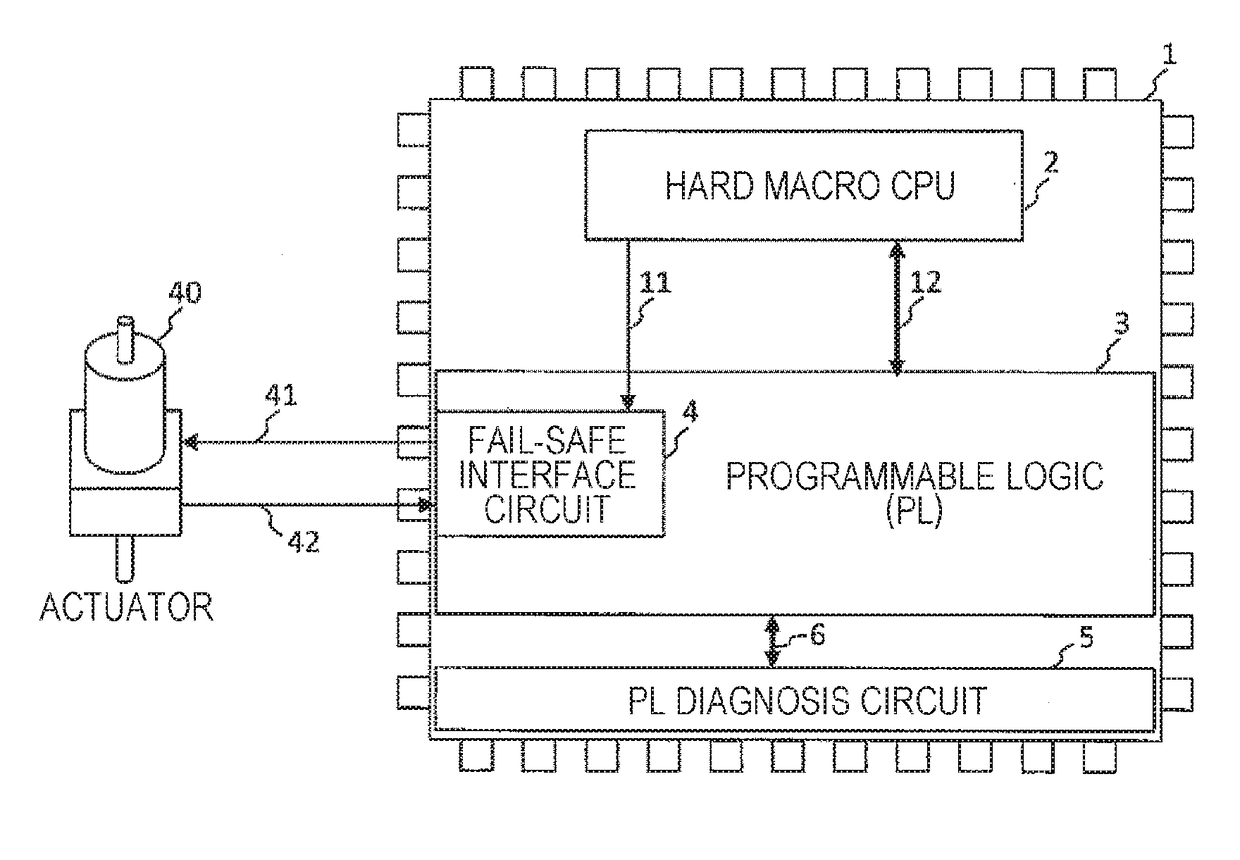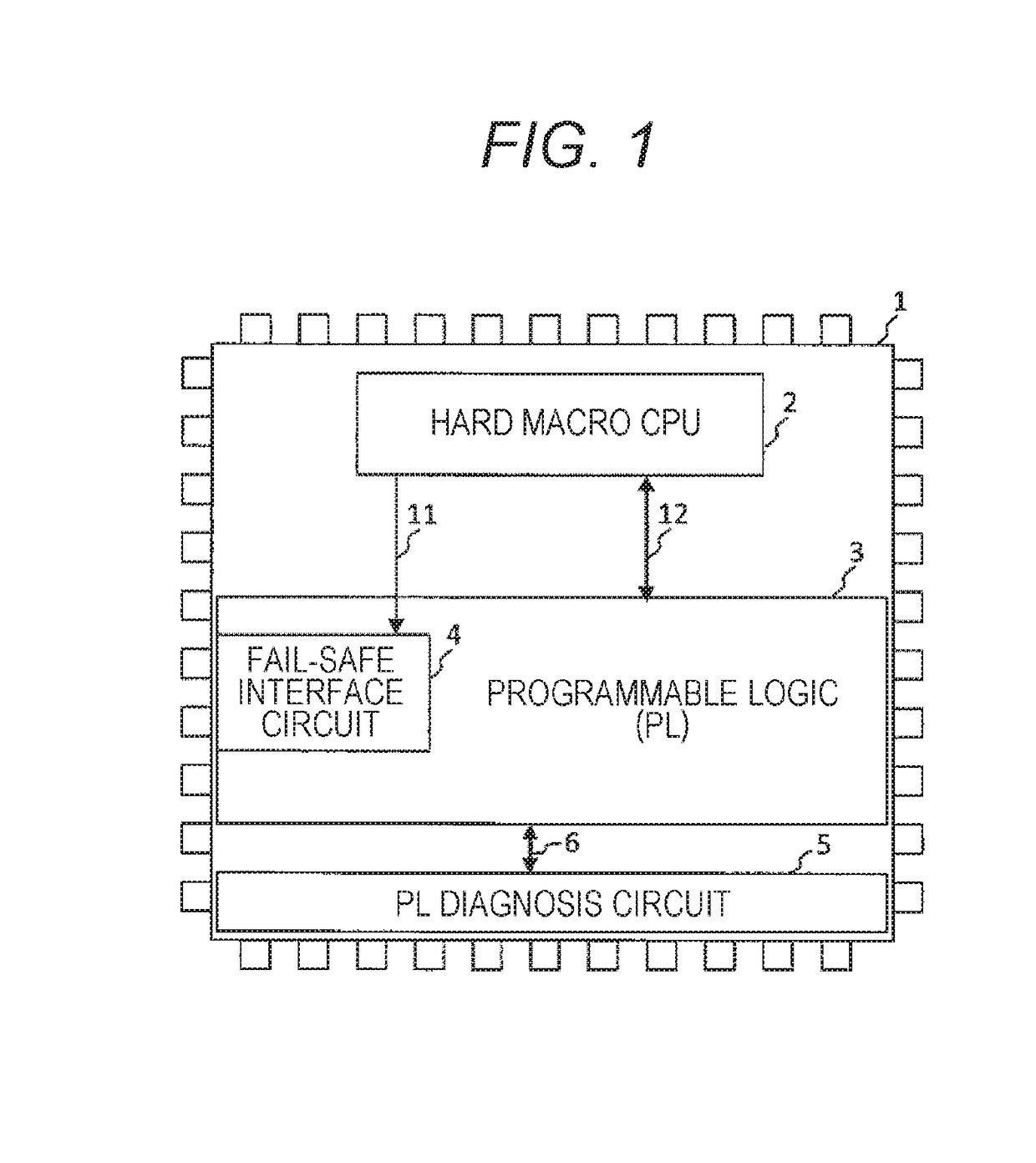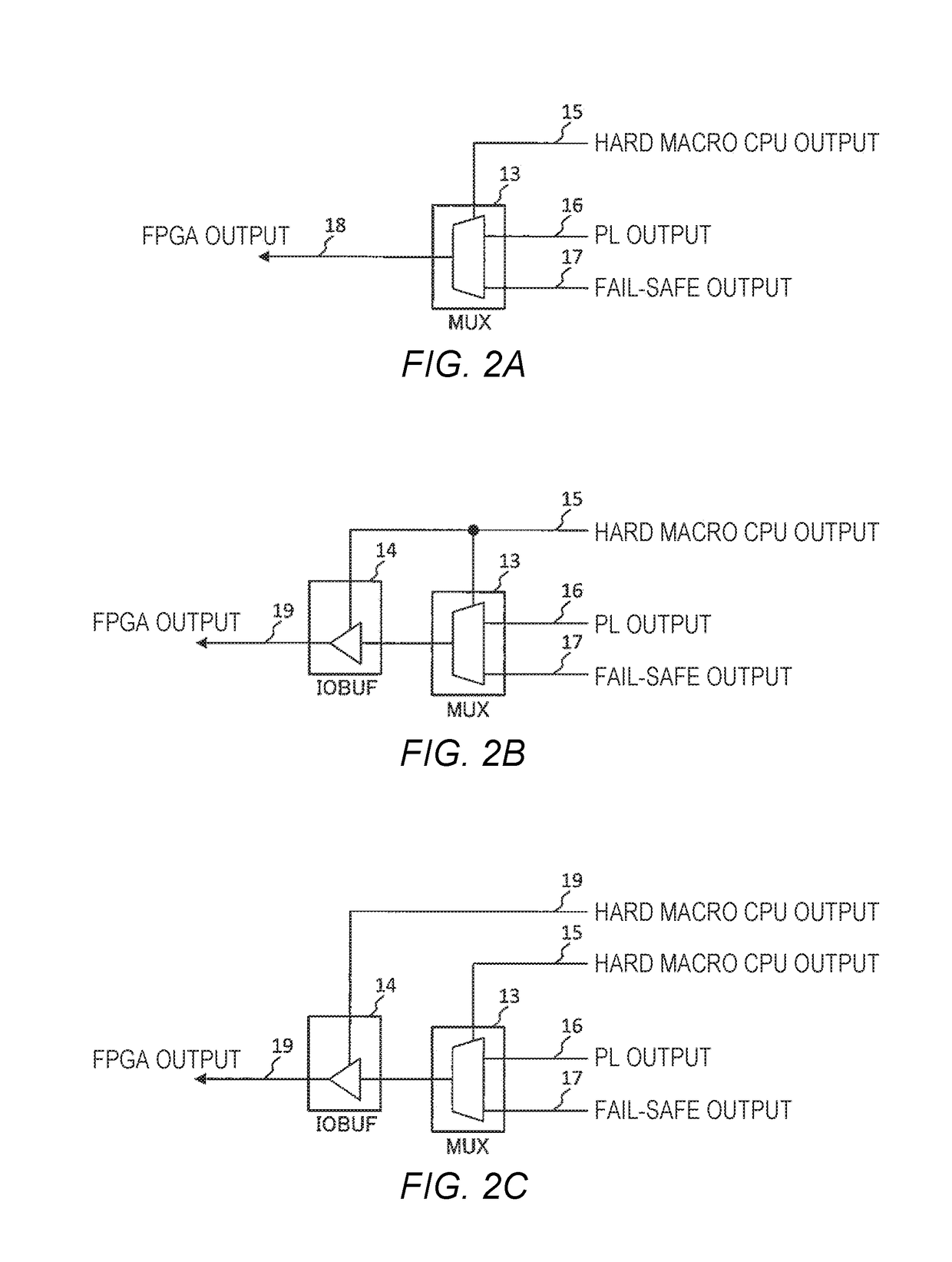Field Programmable Gate Array
- Summary
- Abstract
- Description
- Claims
- Application Information
AI Technical Summary
Benefits of technology
Problems solved by technology
Method used
Image
Examples
first embodiment
[0036]FIG. 1 is a diagram illustrating an example of a field programmable gate array (FPGA) of the invention.
[0037]The FPGA (1) has therein a hard macro CPU (2) in which the circuit configuration is fixed and the function is not changeable, a programmable logic (PL) 3 in which the circuit configuration is changeable at the time of power activation or in operation, a fail-safe (FS) interface circuit 4 which is configured in the PL (3), and a PL diagnosis circuit 5.
[0038]The hard macro CPU (2) is mounted to output a unidirectional FS control signal 11 to the FS interface circuit 4, and a bidirectional PL control signal 12 is output from the hard macro CPU (2) with respect to the PL (3).
[0039]In addition, the PL diagnosis circuit 5 is a diagnosis circuit which can detect a failure or an error in a case where the failure or the error occurs in the PL (3), and is connected to the PL (3) through a PL diagnosis signal 6 to exchange information necessary for the diagnosis. In this embodimen...
second embodiment
[0060]Next, the description will be given about an example of the system using the FPGA of the invention in which a higher safety is realized.
[0061]FIG. 7(a) is a timing chart illustrating an example of a starting-up process of the system using the FPGA of the invention, in which it is considered that the system operates in a control period with the same contents as those illustrated in the timing chart of FIG. 6 of the first embodiment.
[0062]In the system, as illustrated in FIG. 7(a), the starting-up process is performed after power is input and then an FS output start process 55 is first performed before the procedure enters a normal process by a control period, and the system becomes a state in which a signal indicating FS is output to a device connected to the FPGA.
[0063]After the FS output start process 55, a start process 56 is performed and minimum resources necessary for the system to operate are activated. Then, when the diagnosis of the PL is normally ended by the PL diagn...
third embodiment
[0066]Next, the description will be given about an example in a case where an FS configuration is realized not to output erroneous data to the outside of the FPGA of the invention.
[0067]FIG. 8 illustrates an example of four types of FS signals which are output from the FS interface circuit in the FPGA in synchronization with a clock signal.
[0068]FIG. 8(a) illustrates an example in a case where an FS signal is output which becomes a high potential (High) when a failure or an error occurs in the system. Herein, when an error is detected in the FPGA at a clock cycle c2, the High signal is output as the FS signal after a clock cycle c3.
[0069]FIG. 8(b) illustrates an example in a case where an FS signal is output which becomes a low potential (Low) when a failure or an error occurs in the system in contrast to FIG. 8(a). Herein, when an error is detected in the FPGA at the clock cycle c2, the Low signal is continuously output as the FS signal after the clock cycle c3.
[0070]FIG. 8(c) illu...
PUM
 Login to View More
Login to View More Abstract
Description
Claims
Application Information
 Login to View More
Login to View More - R&D
- Intellectual Property
- Life Sciences
- Materials
- Tech Scout
- Unparalleled Data Quality
- Higher Quality Content
- 60% Fewer Hallucinations
Browse by: Latest US Patents, China's latest patents, Technical Efficacy Thesaurus, Application Domain, Technology Topic, Popular Technical Reports.
© 2025 PatSnap. All rights reserved.Legal|Privacy policy|Modern Slavery Act Transparency Statement|Sitemap|About US| Contact US: help@patsnap.com



